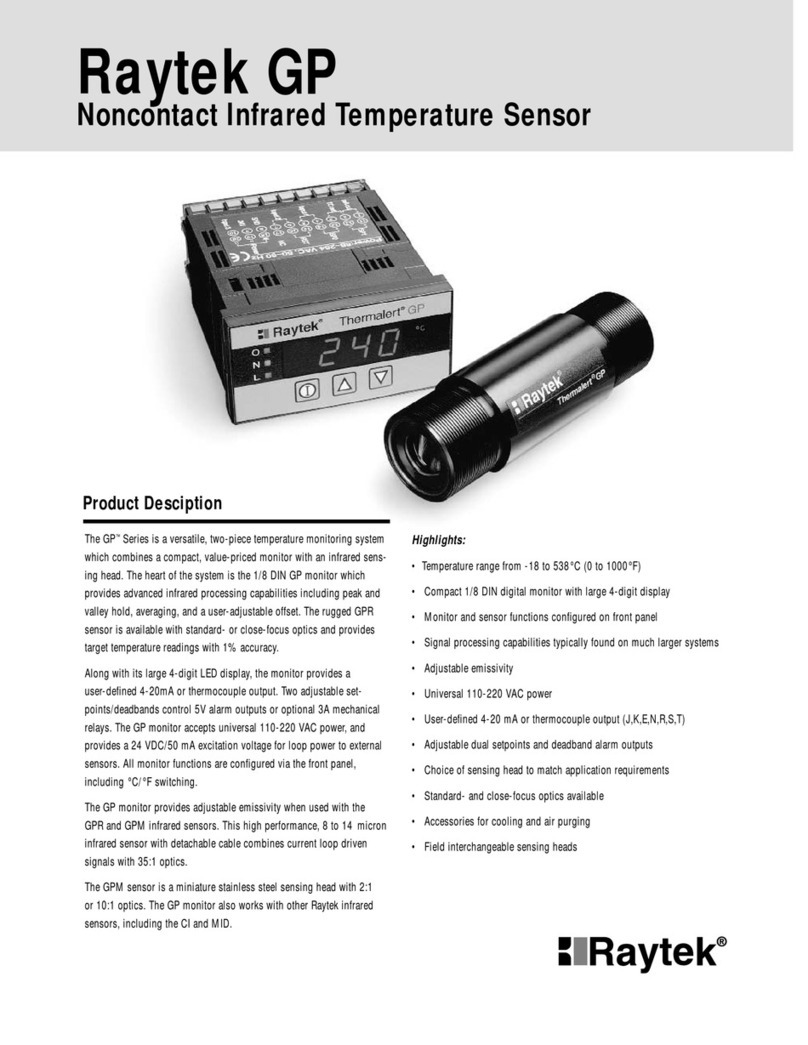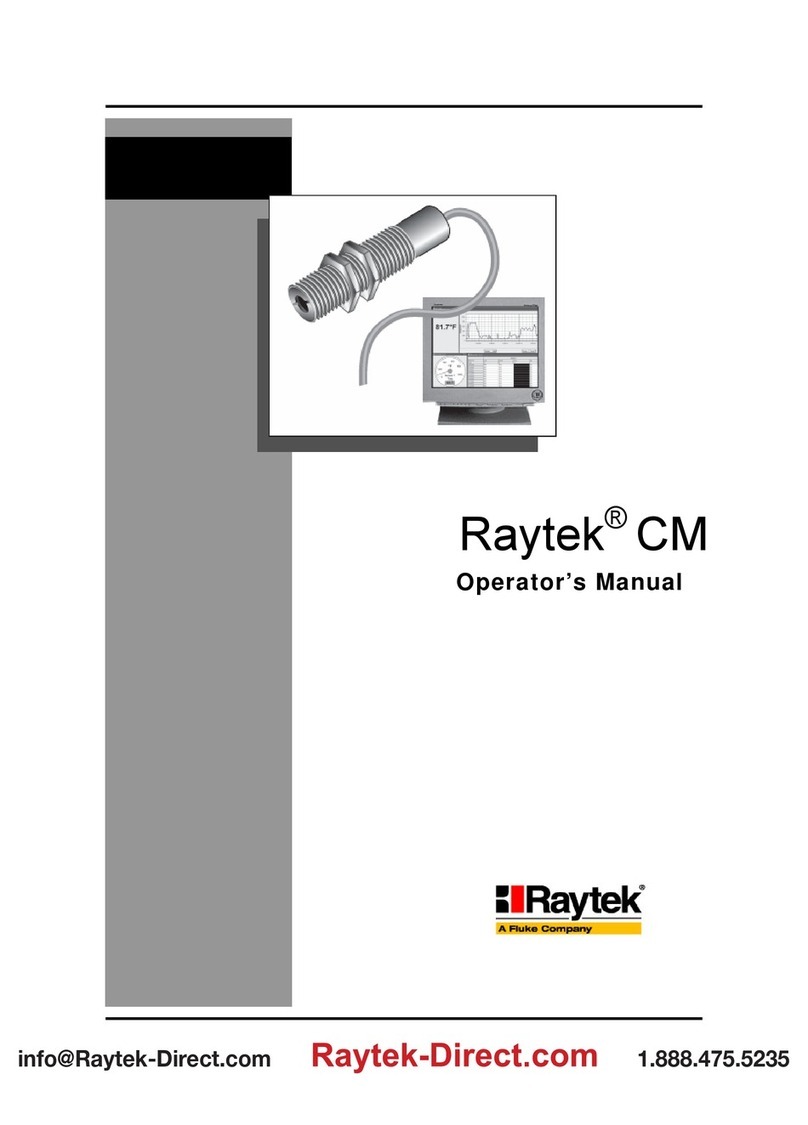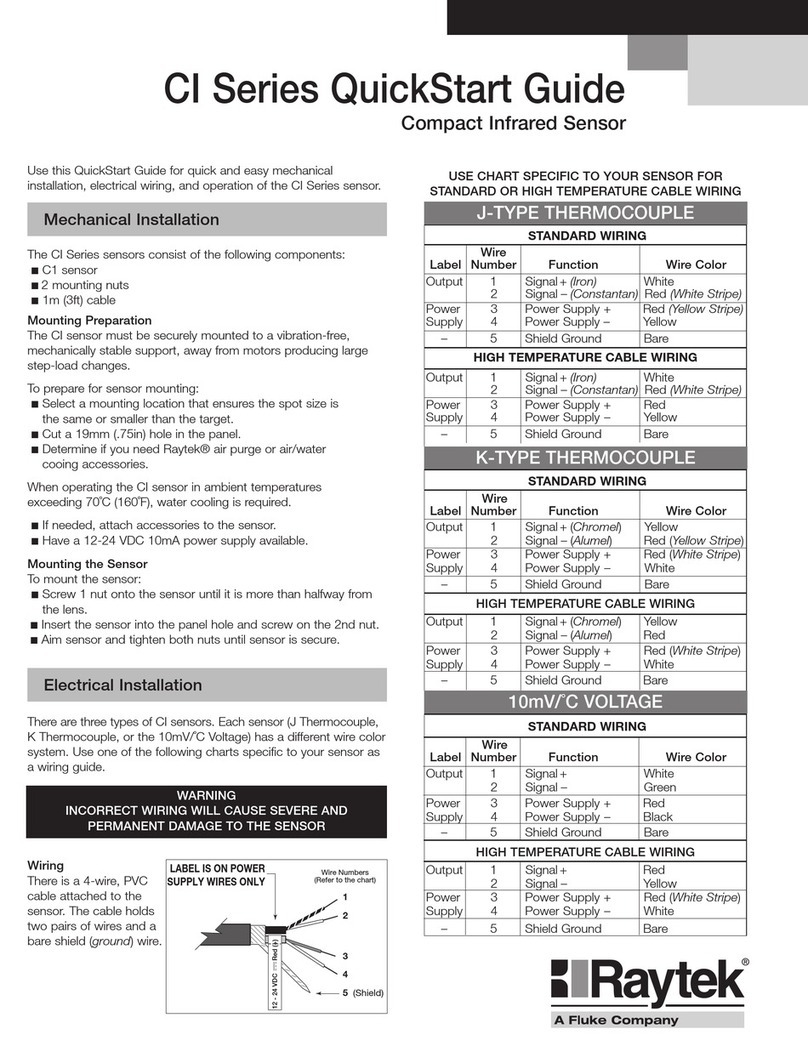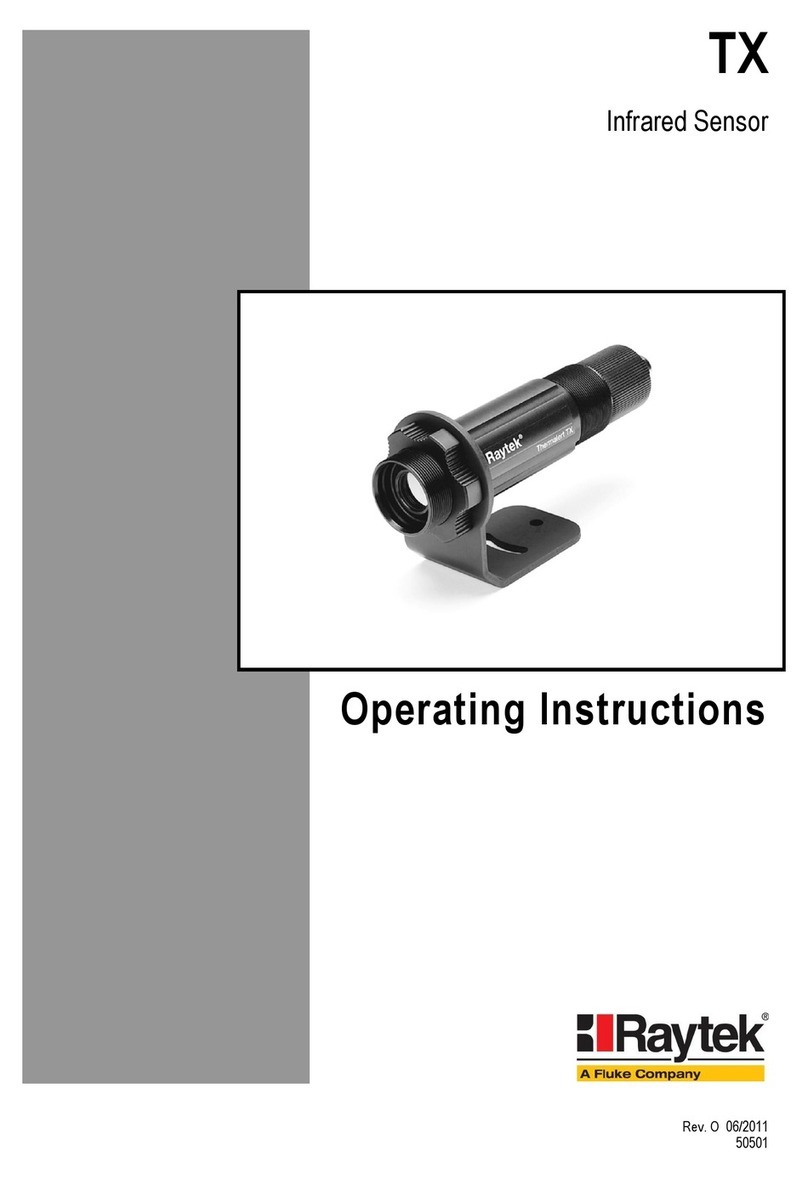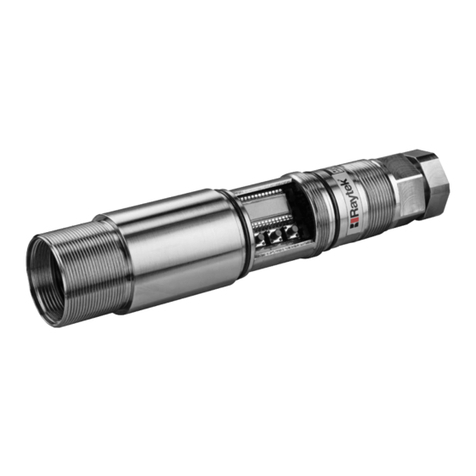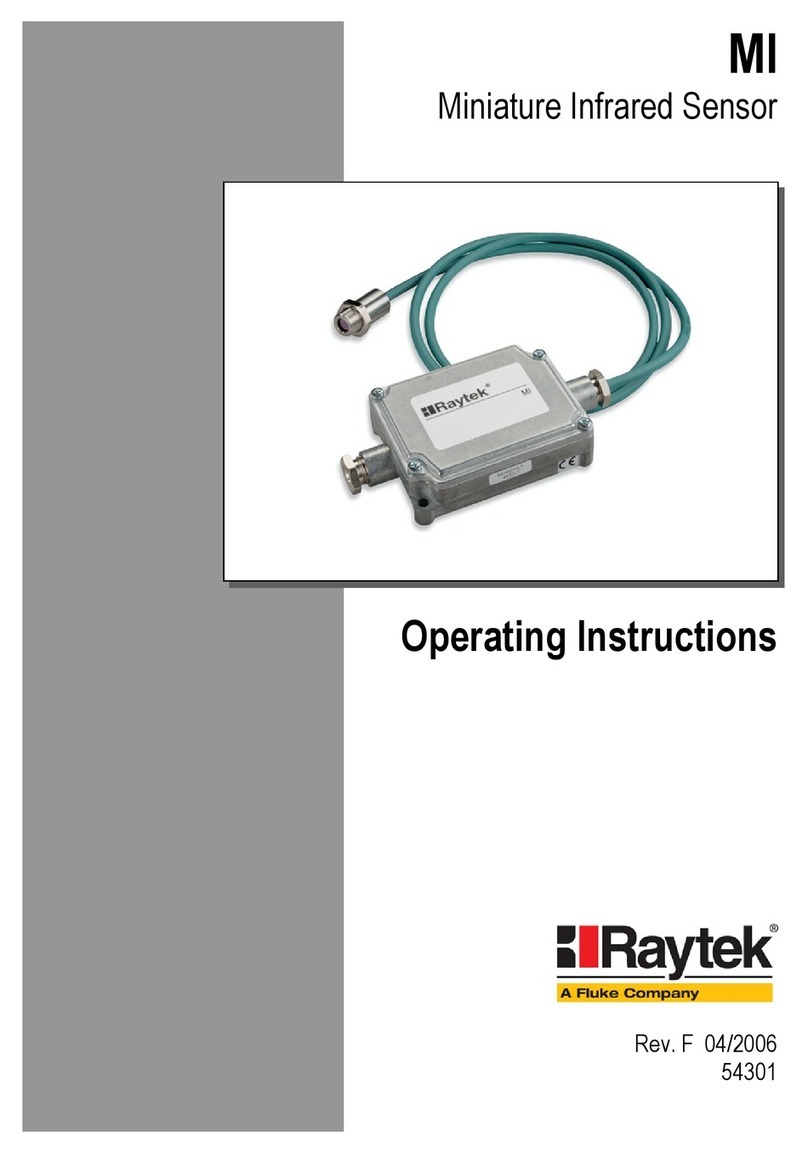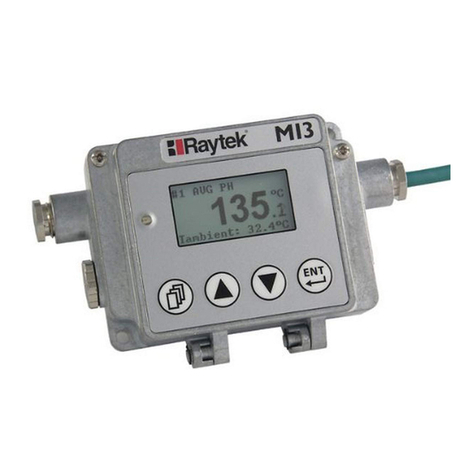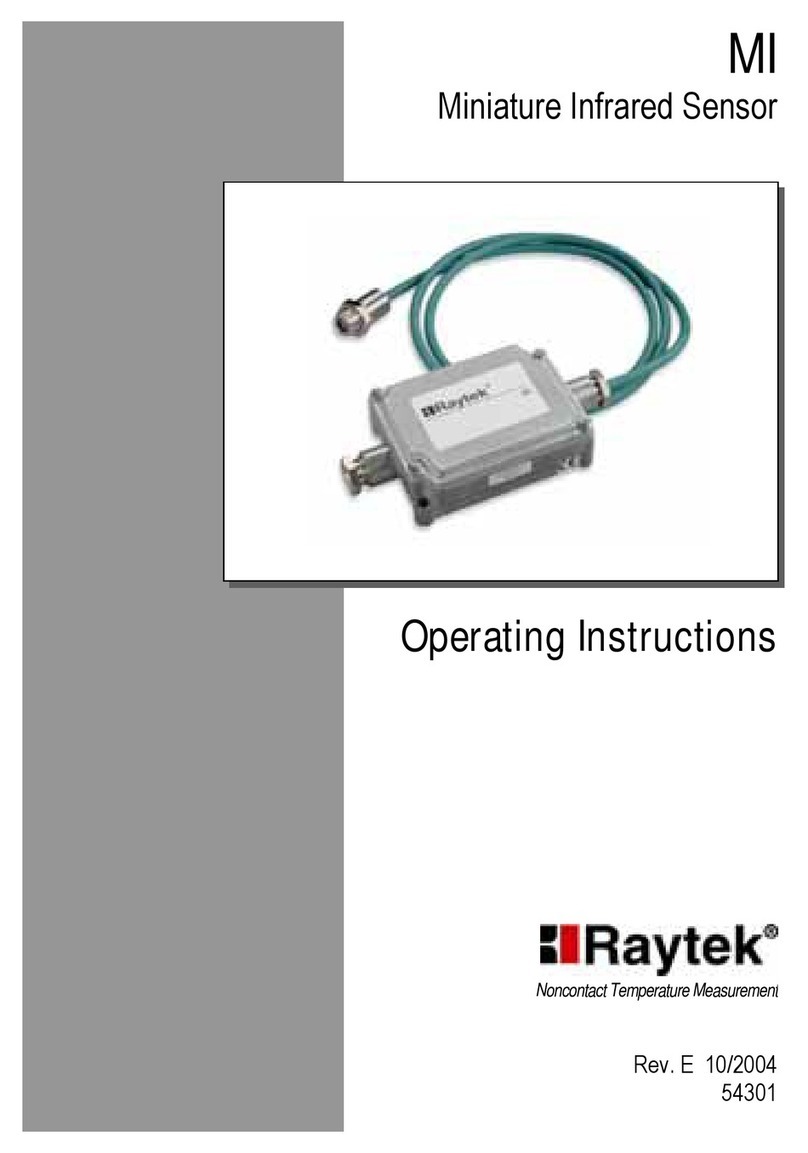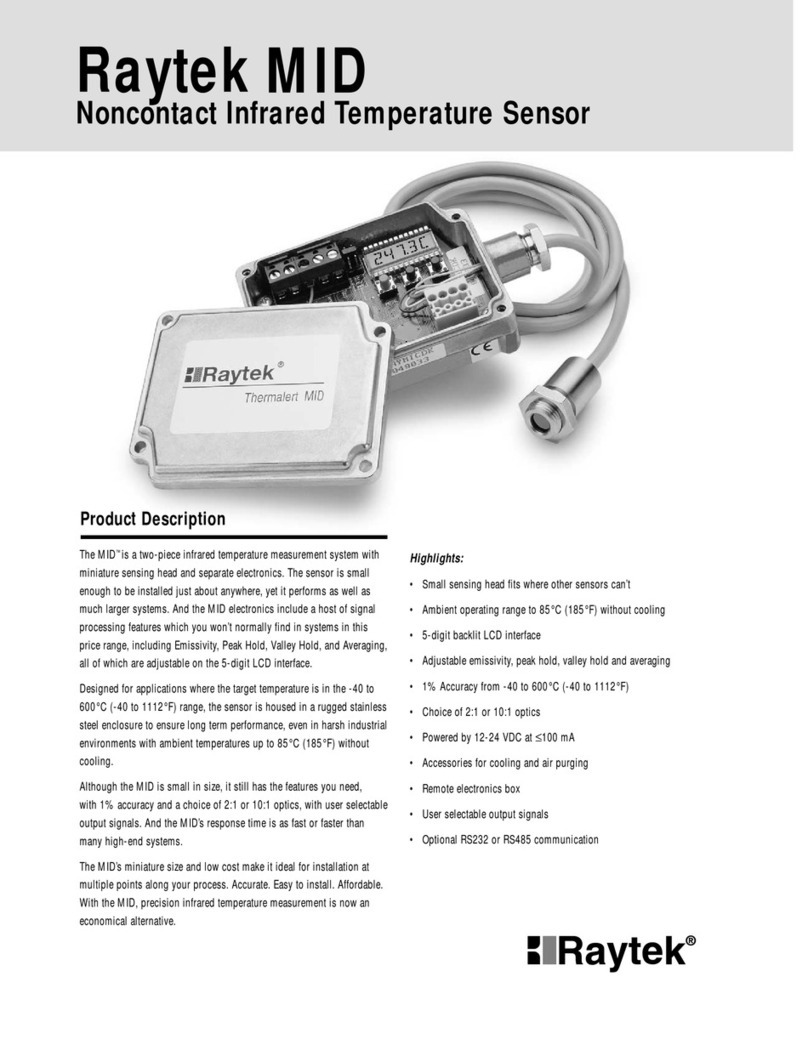Content
1 Safety Instructions .................................................................................................8
2 Description............................................................................................................10
3 Technical Data ......................................................................................................11
3.1 PARAMETERS....................................................................................................11
3.2 OPTICAL DIAGRAM..........................................................................................13
3.3 SCOPE OF DELIVERY.........................................................................................14
4 Basics ......................................................................................................................15
4.1 MEASUREMENT OF INFRARED TEMPERATURE ................................................15
4.2 DISTANCE AND SPOT SIZE ...............................................................................16
4.3 AMBIENT TEMPERATURE .................................................................................16
4.4 ATMOSPHERIC QUALITY..................................................................................16
4.5 ELECTRICAL INTERFERENCE ............................................................................17
4.6 EMISSIVITY OF TARGET OBJECT .......................................................................17
5 Install and Operation ..........................................................................................18
5.1 DIMENSIONS OF SENSOR..................................................................................18
5.2 MECHANICAL INSTALLATION .........................................................................19
5.3 CABLE...............................................................................................................19
5.4 WIRE CONNECTION .........................................................................................20
5.4.1 Analog output ...........................................................................................20
5.4.2 Alarm output.............................................................................................20
5.5 LED INDICATOR AND BLINK MODE.................................................................21
6 Software .................................................................................................................22
7 Accessories ............................................................................................................23
7.1 OVERVIEW........................................................................................................23
7.2 FIXED MOUNTING BRACKET............................................................................24
7.3 ADJUSTABLE MOUNTING BRACKET ................................................................25
7.4 AIR PURGE COLLAR.........................................................................................26
7.5 RIGHT ANGLE MIRROR....................................................................................27
7.6 PROTECTIVE WINDOW.....................................................................................28
8 Programming ........................................................................................................29
8.1 GENERAL COMMAND STRUCTURE ..................................................................29
8.2 DEVICE SETUP ..................................................................................................30
8.2.1 Temperature Calculation...........................................................................30
8.2.2 Post Processing .........................................................................................30
